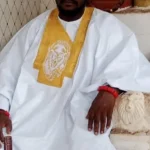- Unbreaking The News
- Work
- Life
- Lifestyle
- HumanityDiscover the latest trends, style tips, and fashion news from around the world. From runway highlights to everyday looks, explore everything you need to stay stylish and on-trend.
- Mental HealthStay informed about health and wellness with expert advice, fitness tips, and the latest medical breakthroughs. Your guide to a healthier and happier life.
- Science & Technology
- Literature
- About Us
- Unbreaking The News
- Work
- Life
- Lifestyle
- HumanityDiscover the latest trends, style tips, and fashion news from around the world. From runway highlights to everyday looks, explore everything you need to stay stylish and on-trend.
- Mental HealthStay informed about health and wellness with expert advice, fitness tips, and the latest medical breakthroughs. Your guide to a healthier and happier life.
- Science & Technology
- Literature
- About Us
Now Reading: Cadence: I Got Rhythm
-
01
Cadence: I Got Rhythm
- Unbreaking The News
- Work
- Life
- Lifestyle
- HumanityDiscover the latest trends, style tips, and fashion news from around the world. From runway highlights to everyday looks, explore everything you need to stay stylish and on-trend.
- Mental HealthStay informed about health and wellness with expert advice, fitness tips, and the latest medical breakthroughs. Your guide to a healthier and happier life.
- Science & Technology
- Literature
- About Us
Cadence: I Got Rhythm

Life and career in a funk? Find your rhythm or change it up
Self-improvement?
It was a dark and stormy night, but let me say something first.
I struggle with procrastination a lot, as you see. I can stay in a rut for ages, and there are times when I just want to give up when I find my life and work pointless. Some self-improvement gurus online say we should change our routine and do more self-care. Others say we should try something new or practice Ikigai, the Japanese art of finding one’s purpose in life. I cringe at how people talk about Ikigai outside of Japan. I lived there for six years, and no local I met ever talked about it. It’s all just hype, unless you read from Ken Mogi’s book exclusively. Anything else is just Western productivity bro hack-speak that totally misses the point. Ikigai is about finding satisfaction in the little things, rather than figuring out what you are good at and what the world needs. Those Venn diagram representations you see online are nothing more than poor attempts by management writers to turn us into more productive robots.
I read about staying motivated at work from the internet, like most of us do, I’m sure. The blogs I read all say similar things: we need to find purpose at work, change our attitude toward our job, or find something more
meaningful. I am all for these things, but my squabble comes from noticing that people still leave
meaningful jobs anyway. Take, for instance, the people who work in social impact or for the not-for-profit sector. Their jobs do not pay very well but they are considered meaningful in the sense
they do good for other people and the reward for it is intrinsic. High feel-good factor over
monetary value. No one does charity to become rich themselves. Now, I think these motivation
problems are important because businesses cannot run efficiently without people who want to
work there.
This insight came about during an outdoor dinner on a stormy night in a water village in my home country.
Dinner on stilts
The evening rain accompanied us steadily on the evening of January 29th, 2025 while driving towards a restaurant for dinner. My EduTech boss and I were in the car driving our CEO and COO from their hotel near the Brunei International Airport to Kota Batu, a historical area in our capital city of Bandar Seri Begawan. Kota Batu used to be the ancient capital of our country and is now home to museums and a section of the Water Village, a national tourist attraction and traditional residential area. Our colleague who recommended the restaurant to us that night wanted to share some traditional Bruneian hospitality to our seniors, by way of doing this.
When we exited the car, we boarded a wooden walkway to get to the diner, as it was in the area of the Bruneian Water Village, the site of the old capital. The Brunei River lapped against the wooden stilts beneath us, iridescent from the light of lanterns and fluorescent lamps that lit the restaurant verandah.
That CTO got rhythm
The smell of barbequed meat skewers, which we call satay in our local language of Malay hung around the air, whetting our appetites. We settled at our reserved table and got into a conversation about business and our plans for the company. One thing that stood out to me during the conversation was how our C-Suite (minus one) spoke about the CTO, who was absent. They credited him with the success of the business, as a master of a flow called “cadence”.
I had always known cadence in poetry and music — the rise and fall of the arc of a melody, the measured rhythm of words. But here, on this stilt house turned restaurant, against the backdrop of a lighting-filled sky with gentle evening rain, I learned something new about cadence in business. Or life.
Nearby, fishermen cast their nets into the river, guided by their flashlights and their fishing instincts. As they worked, my mind caught onto the idea of a kind of rhythm in business workflows. Just as village fishermen knew where to cast their nets and the time to cast them without the aid of sonar onboard a modern fishing vessel, modern business pros know how to optimize their routines when they work. Our CTO was on top of things, like knowing how to handle customer complaints or feedback, the marketing, or even just how to make a website work using his tech wizardry. All this, his peers said, came down to his cadence or workflow. They praised his time management skills, his ability to take naps when he wants, and his overall mastery of his daily schedule.
He was like the encyclopedic entry of cadence itself.
I caught on to this idea quickly through their introduction. This tale brought the joy of discovering a word anew, one that was in my vocabulary, unused, picked up somewhere in the course of my studies, but only usable for work through business jargon.
I thought of Mogi’s ikigai, which emphasized that life’s purpose and happiness go hand in hand. Mogi, a neuroscientist, said “Ikigai starts from very small things, like just having a cup of coffee.”
Embracing routine
Aligning purpose with habit is also found in this philosophy of ikigai, which is like a spectrum for embracing purpose in work, play, and life in general. Productivity or management writers like to express this concept in Venn diagrams, which get it wrong, as they are more the idea of aligning purpose with passion for the sake of a productive workflow. Ikigai, for Mogi, starts with gratitude rather than the expressed purpose of improving personal efficiency or effectiveness. Which also makes it distinct from cadence. Yet, how they are similar is that Ikigai-like cadence embraces routine.
There is a kind of rhythm or harmony in the flow of life and work, much like the way the fisherman is connected to working with nature. It gives the confidence to fish in the middle of the rain or even a light storm, because he knows his catch is always there.
As my company bosses and colleagues stepped outside into the damp night, the rain stopped. And then, suddenly, the sky above Bandar Seri Begawan erupted in light — bursts of gold and crimson, crackling fire against the murky river. The fireworks signaled the arrival of Chinese New Year in our Malay Capital, their shimmering reflections rippling across the water.
I stood there captivated as we posed for a group picture.
Rhythm. Movement. Repetition. Turning Point. Result. It wasn’t just poetry or business — it was life itself.
(Image courtesy of Hung Li via Unsplash)
Abu Danial Zaili
Abu Danial is a writer from Brunei and has lived in the Philippines, Brunei, Australia, and Japan. He is 33 years old and enjoys writing, philosophy, economics, travel, and hiking. A student and career changer, he is currently studying accounting.
Thank you to Yosef Baskin for his inspired edits on the piece.
Related Posts
Stay Informed With the Latest & Most Important News
Previous Post
Next Post
Editorial1 hour ago
Cadence: I Got Rhythm
Editorial3 days ago
When Distance Tests Love
Editorial5 days ago
Family of Origin
























